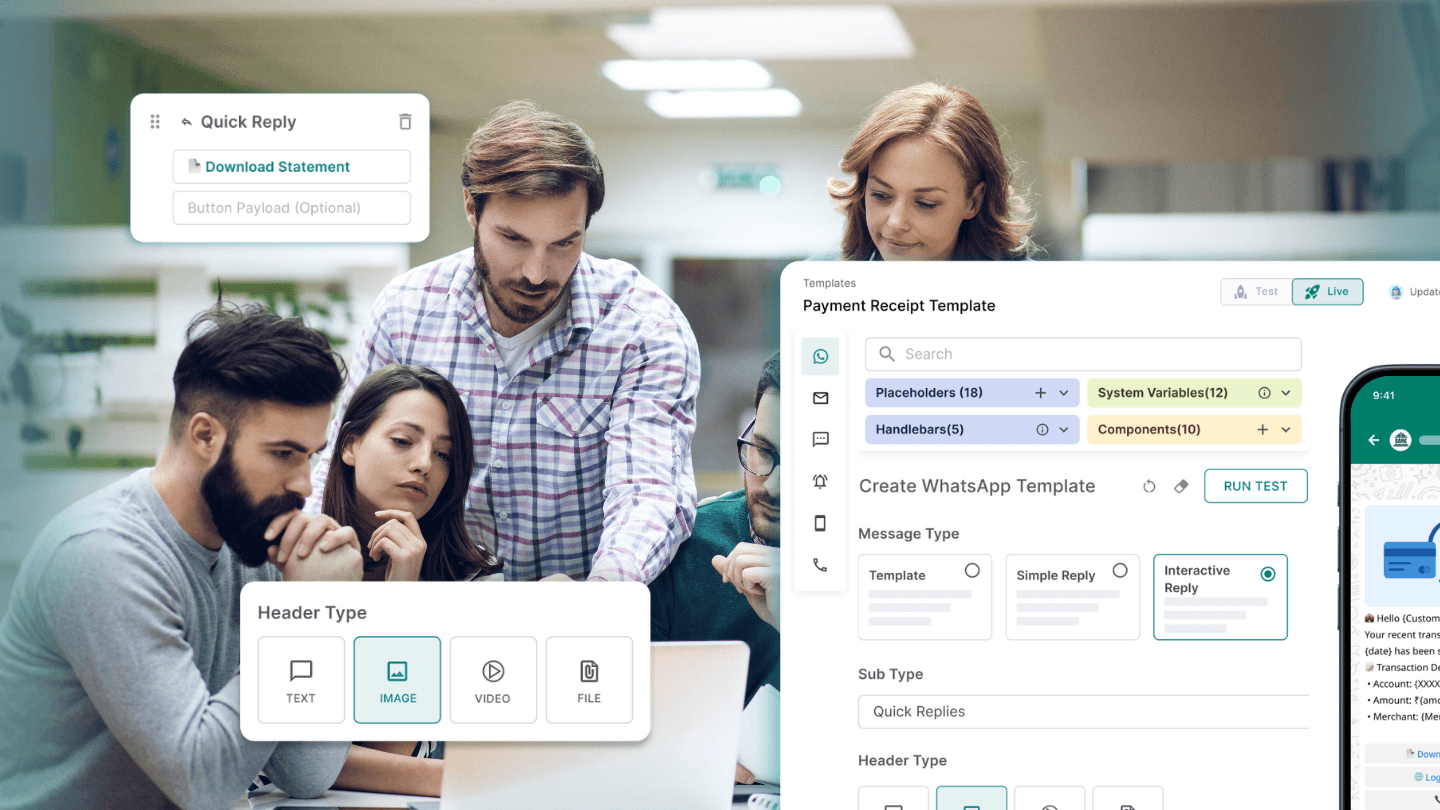It’s not up for debate anymore whether your business needs to be online or not. One of the first things that a user does, regardless of their purchasing power, is to check you out online. It’s understood that you need to have a presence on the internet. The hot debate is how much influence you have, who to target with that, and most importantly, how.
Today I’m dwelling on the different paths that B2B (Business-To-Business) and B2C (Business-To-Customer) are, and trying to take the road less travelled to see how notifications fit into each of these categories of marketing.
As the names suggest, B2B caters to other businesses, while B2C speaks directly to customers. Whether we’re talking to a business or a direct customer, marketing automation continues to evolve rapidly every day. It becomes critical to adapt quickly and stick with the trends to ensure optimum and relevant communication is smoothly executed for your business.
Here are some key differences in the role that marketing plays for B2B and B2C. Let’s take a crack at it, shall we?
Buying and decision-making processes
The process for B2B and B2C is entirely different in terms of how purchasing happens. For a B2B business, the game lies in finding the right person in an org who has the decision-making powers. For example, if a CTO is the one who needs to give the go-ahead on buying a product, then it’s pointless speaking to a product manager. Identifying the right person (or sometimes, teams) for the decision becomes extremely critical. The sales cycle of B2B is much longer because there are long hierarchies to be followed for approval. This could take weeks, maybe even months. Whereas for B2C, the decision-making lies with the individual; it’s way faster, impulsive and doesn’t require multiple rounds of convincing.
Campaign Goals
With such different sales cycles bring with them different goals to set. B2B is a much longer sales cycle, hence will require multiple touch-points and retargeting. It will be important to have a consistent top-of-mind recall for the decision-maker. In contrast, B2C calls for a flurry of traffic on the website as well as a strong social media game since the decision-making is very quick, and hence a strong impact could lead to an instant sale.
Keyword Optimization
SEO is an important piece to keep your eyes on the prize. B2B keywords are more niche, and specific to the product and company. But B2C keywords could be more generic because the pool is massive and the target audience is vast.
Content Strategy
Now that we’ve established how different the buying patterns are between the two, the strategy used to target the two different groups also varies. To get the best possible results, it’s important to keep experimenting with content, as there’s no dearth of content or strategies. Of course, you’ll have to follow a method of trial and error to know exactly what your audience is looking for and what they’re responding to. A B2B content approach would involve detailed, informative forms of content that match the long-drawn temperament of B2B sales. B2C, however, would require flashy, bite-sized content that can immediately get the attention of the customer and convert into a sale as quickly as possible. Relevancy and relatability take the cake.
Customer relationships
B2B is a long game plan, which requires close interpersonal relationships to be formed for a prolonged and good customer experience. A lot of customizations are possible due to these relationships. It is also a pivotal role because B2B purchases could potentially be bigger and would demand closer attention since maintenance and constant customer support of/for the product could also be a part of the package. B2C, considering the nature of quick purchases, don’t involve consistent touchpoints unless absolutely deemed necessary, or while retargeting the same user for a repurchase. Needs arise if there’s any after-sales service required, or if the customer is unhappy with a product and wants to contact the concerned team. Customer relationships are quite rare for a B2C business. Exceptions could be really small businesses that speak to a very small customer base via Instagram or Whatsapp.
Product Pricing
Pricing depends on the end customer and their purchasing power. B2B customers usually choose monthly billing, as the purchase could last for months or even years. If the trust factor is higher, then a company could opt for annual billing as well, so there’s no hassle of raising online invoices every month. Therefore, the pricing can be tailored to keep the customer paying for as long as possible. On the other hand, B2C customers mostly make a one-time purchase, so the main focus is to price the product optimally, taking into account competitors' strategies.
Acquisition Costs
The costs of acquiring B2B customers are significantly higher than B2C, mainly due to the need for extensive marketing campaigns and lengthy sales cycles. However, social media and other short-term campaigns make it easier to capture a B2C audience with much lower spending.
Now that we’ve established the different ways in which B2B and B2C are treated, I shall now break down the routes of communication, the notification experiences and how one can create maximum impact with the right kind of effort.
B2B
- Blog hits: Those who visit the blog pages have already shown interest in reading the material and education you’ve provided. You could try to capitalize on this and send them related content to rope them into the intricacies of your product/service. Writing about very specific topics that add value to businesses could be a good way to engage with teams and individuals alike.
- Business page: If someone visited your business page and has dropped off, a small note in the form of an email or push notification might increase engagement and brand recall.
- Engagements: Once you’ve captured a lead, it may be worth your time to engage them with announcements, product updates, value adds, discounts etc. Information tailored to them based on their industry will be a great segue into helping them understand the value you can bring to the table.
- Pricing page drop-offs: If a user spent time on your website to arrive at the pricing page, then it’s a big show of interest. But also possible that something in the pricing possible didn’t work for them. This could pave the way for a discount, along with a touch of personalization to get hooked back into your product.
💡 For B2B, email and push notifications become the most crucial form of communication.
For a B2C business, the journey is more complex and involves engaging with multiple channels.
- Awareness: The first step is to let the user find the brand and understand what the product is solving. This is done via PR, online ads, or even word of mouth.
- Interest: If a user has been made aware of your product, the next step is to lure them in to find out more about your core offerings. This could be pushing more targeted ads to them with more information, and also through a strong email marketing plan.
- Contemplation: The gap between interest and actually making the sale might be a short window for B2C. So quickly engaging them with blogs, emails, other customer testimonials platforms, reviews, etc, could be that nudge they need towards making a decision.
- Retention: After the user has considered and completed the purchase, it's time to encourage them to return to your platform and remember your brand. Keep them engaged with emails, newsletters, and blogs. Now is the ideal time to add them to a community (if you have one) or start including them in your push or in-app notifications strategy, depending on what you're selling.
Whether you’re running a B2B or a B2C business, communication is going to be the backbone of your business, so ensure you’re deploying the best possible strategies in place for mind-blowing results!


